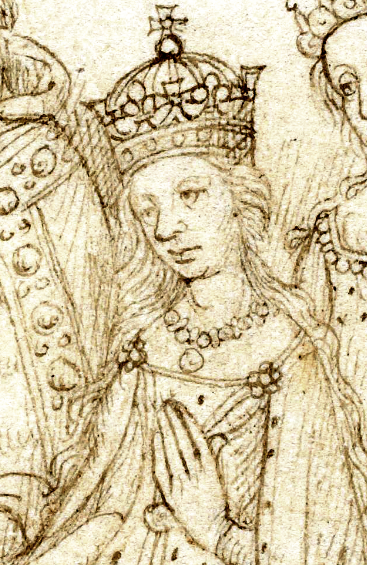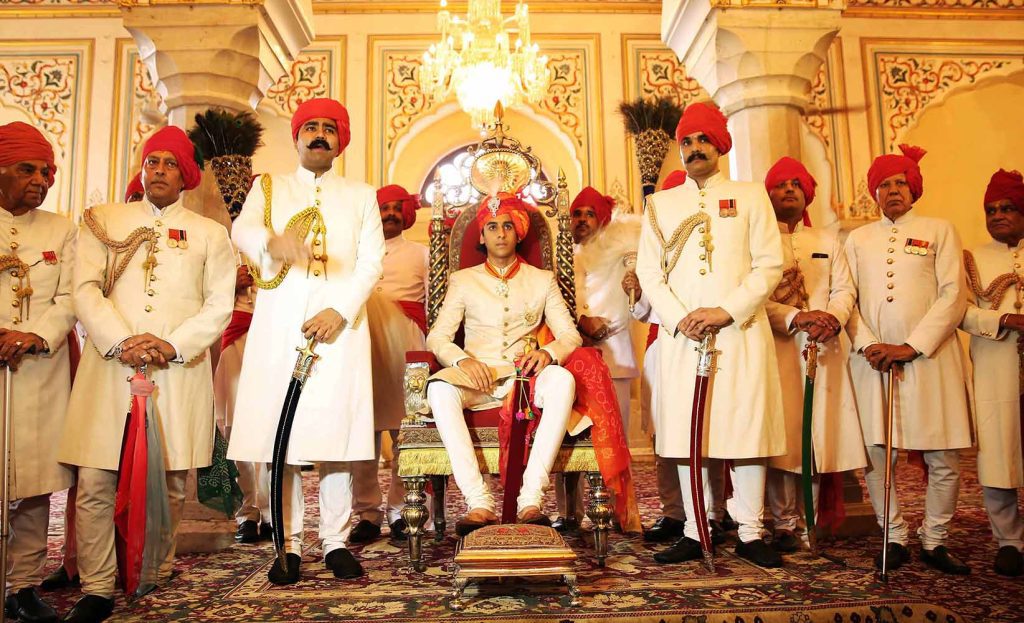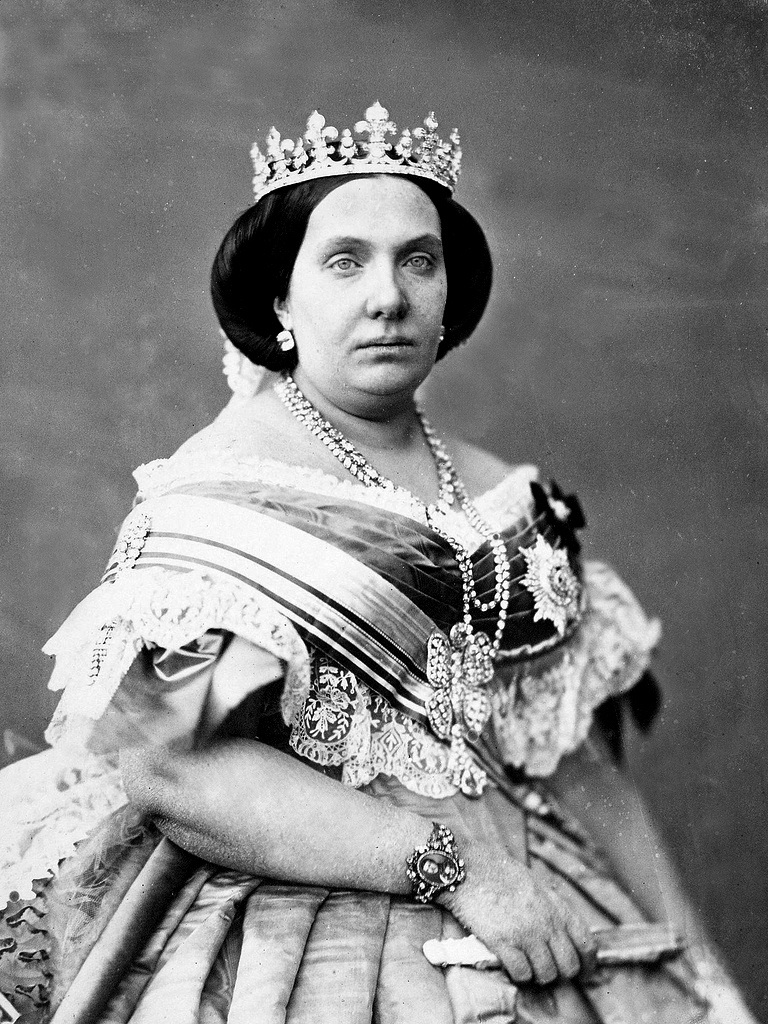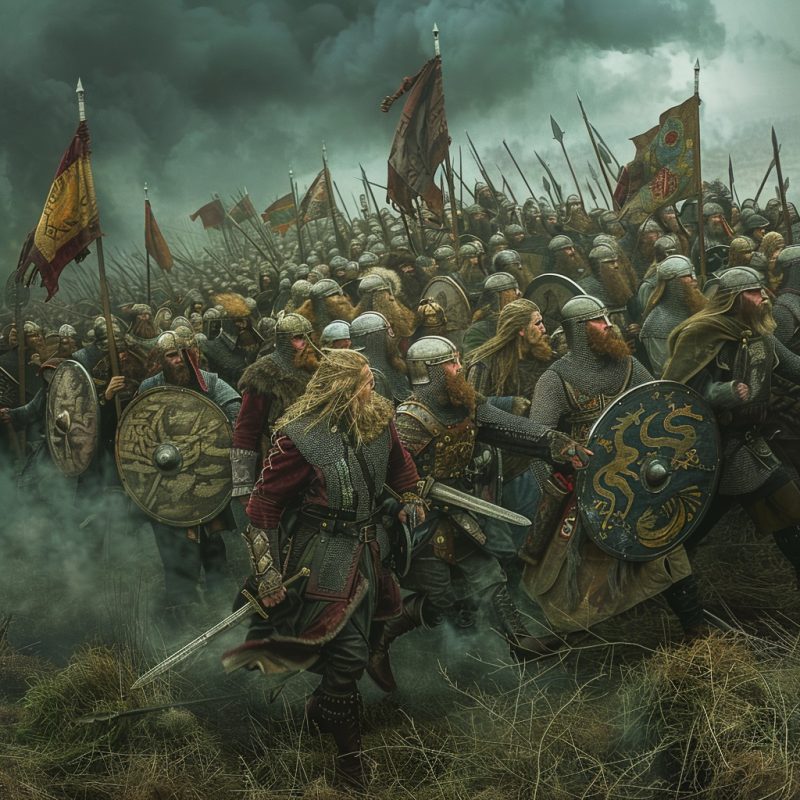Catherine de Valois, a significant persona in medieval European history, played a crucial role in bridging the French and English royal families. Born in the royal court of King Charles VI of France, her life was marked by political intrigue and personal upheaval. As the queen to King Henry V and the mother to Henry VI, her influence reverberated beyond her lifespan. In addition, her clandestine marriage to Owen Tudor laid the groundwork for a legacy that marked the dawn of a new epoch in English history.
Catherine’s tale is a powerful one of survival and resilience, as she maneuvered through the perilous political terrains of both France and England. Her marriages served as more than just personal bonds, but as political affiliations that influenced her surrounding world. Despite the hurdles she encountered such as the premature death of her husband Henry V, and the complications related to her son’s minority, Catherine skillfully steered through these challenging circumstances.
Early Life and Background of Catherine, Daughter of Charles VI of France
Catherine of Valois was born in Paris, France, on October 27, 1401. She was the youngest daughter of King Charles VI of France, also known as “Charles the Mad” due to his frequent mental breakdowns, and Queen Isabella of Bavaria. Catherine’s childhood was overshadowed by her father’s mental health problems, which made the French court a highly unpredictable environment. King Charles VI’s reign was characterized by periods of insanity, creating a state of uncertainty in the kingdom, despite the presence of a stable regency.
Furthermore, her mother, Isabella of Bavaria, was entangled in her own political battles and power struggles, and had a difficult time managing the unstable court. This environment reportedly resulted in Catherine having a lonely and, as some scholars suggest, notably loveless childhood.
In order to secure her religious education and perhaps to keep her away from the court, Catherine was sent to the Poissy convent at an early age. This convent was renowned for its strict discipline and high standards, serving as a sanctuary for Catherine from the political schemes and family disputes that marked her early life. Here, Catherine would have been given religious teachings and a fundamental education, a typical practice for young noblewomen in her era. Arguably, this was the most stable phase of her life until then.
Betrothal and Marriage Negotiations
In 1403, when Catherine was just two years old, she was briefly betrothed to Charles, heir of Louis, Duke of Bourbon, but in time this betrothal was broken off. The marriage negotiations for Catherine of Valois to the English heir began in earnest after Henry IV proposed a peace treaty with France in 1408. This was part of a broader plan to end the war between England and France, which had been ongoing since 1337. King Henry IV’s idea of peace was a dynastic marriage that would unite the two kingdoms and bring a lasting truce.
Henry IV passed away in 1413, and his son Henry V took over the throne. Known for his military prowess and ambition, Henry V was keen on establishing his authority over the French territories, which would reignite the war between England and France. Despite this, the prospect of a marriage alliance was still appealing to both royal courts. Henry V persisted in his negotiations, recognizing the potential benefits of marrying a French Princess. Furthermore, this union would fortify his claim to the French territories and could potentially diminish opposition by establishing a familial connection between the two royal families.
The new marriage negotiations included serious demands from Henry V, such as the return of Aquitaine and Normandy to English control. These were economically and strategically important territories and would make England more powerful and influential in France. The negotiations were lengthy and of a delicate nature as both kingdoms had a lot to lose. Finally, these talks culminated in the drafting of the Treaty of Troyes, a watershed moment in Anglo-French relations.

Marriage to Henry V and the birth of Henry VI
The negotiations culminated in the 1420 Treaty of Troyes, a crucial deal that not only orchestrated the union of Henry V and Catherine, but also acknowledged Henry as the regent and successor to the French throne, thus disowning the Dauphin Charles (who would later become Charles VII). On June 2, 1420, Henry, aged 33, married 18-year-old Catherine in the French village of Troyes. This strategically driven marriage sought to reinforce Henry’s claims in France, a result of his military triumphs, such as the notable Battle of Agincourt in 1415.
Catherine went from being a French princess to the Queen of England, a change highlighted by her coronation at Westminster Abbey on February 23, 1421. Although their marriage was politically motivated, she and Henry V enjoyed a brief time together before he left for military campaigns in France. While he was away, Catherine gave birth to their only child, Henry VI, on December 6, 1421. Sadly, Henry V never got to meet his son as he died of dysentery during the Siege of Meaux in August 1422. After his demise, his body was embalmed and temporarily laid in Rouen Cathedral, before being brought back to England for burial in Westminster Abbey.
The Children of Catherine of Valois
Catherine of Valois bore offspring from her two marriages, underscoring her vital contribution to the English royal lineage. The prevailing scholarly consensus posits that she had two daughters, but there remains some historical contention and scant evidence regarding the existence of Tacinda Tudor.
- King Henry VI of England (December 6, 1421 – May 21, 1471)
- Henry VI, son of Catherine and Henry V, ascended to the throne as the King of England and France. His reign was characterized by the Wars of the Roses, civil wars fought for control of the English throne. This conflict eventually resulted in the emergence of the Tudor dynasty.
- Edmund Tudor, 1st Earl of Richmond (c. 1430 – November 3, 1456)
- The first child of Catherine and Owen Tudor, Edmund was a key figure in the foundation of the Tudor dynasty. He married Margaret Beaufort, and their son would later become, the founder of the Tudor dynasty. Catherine of Valois was thus the grandmother of Henry VII.
- Jasper Tudor, 1st Duke of Bedford (c. 1431 – December 21, 1495)
- Jasper, another son of Catherine and Owen Tudor, had a pivotal role in backing his nephew, Henry Tudor, in his pursuit for the throne. During the Wars of the Roses, he was key to the ultimate triumph of the Tudor claim.
- Owen Tudor (c. 1432 – ?)
- Compared to his more prominent brothers, less is known about another child from Catherine’s marriage to Owen Tudor.
- Margaret Tudor (c. 1433 – ?)
- It is believed that she became a nun, led a relatively obscure life away from the political turbulence that defined her brothers’ lives, and died young.
- Tacinda Tudor (exact dates unknown)
- Tacinda is a relatively unknown figure, with her very existence often disputed in historical discussions. It is thought that she led a reclusive life, mostly out of the public’s view.
Although the exact number of children is unknown, three sons played significant roles in the political landscape of England, particularly through their influence in the Wars of the Roses and the establishment of the Tudors.
Widowhood and Dowager Queen
Henry V and Catherine’s father Charles VI died within a few months of each other in 1422, leaving Catherine a widow and her infant son as both King of England and France. As a young widow and the mother of Henry VI, Catherine’s role was predominantly ceremonial. She resided in England, living in various royal residences such as Windsor Castle and Baynard’s Castle in London.
Rumours circulated during Catherine’s widowhood about a potential romantic link between her and Edmund Beaufort, Duke of Somerset. The significance of these rumours was such that they led to a 1428 parliamentary statute prohibiting the dowager queen from remarrying without the king’s approval. Humphrey, Duke of Gloucester and protector of Henry VI, was especially worried about the political consequences of her possible remarriage. He was concerned that if Catherine tied the knot with a powerful nobleman like Edmund Beaufort, it could form a faction threatening the young king’s authority and his own power position. However, it’s essential to highlight that despite the rumours’ significance leading to a parliamentary statute, there’s no evidence to indicate that there was ever an affair.
Catherine of Valois and Owen Tudor
Although there were limitations, Catherine of Valois wed Owen Tudor, a young nobleman who was part of her household and a Welsh Squire. Their clandestine relationship started while Catherine was residing in Windsor Castle. The precise timing of their marriage lacks solid proof, but it’s generally believed that they secretly tied the knot around 1429.
Edmund and Jasper Tudor were among at least six children they had, and they would significantly influence the future of the English monarchy.
For political reasons, Catherine’s relationship with him remained clandestine. However, this alliance would profoundly influence English history as it laid the foundation for the Tudor dynasty. Their grandson would ultimately ascend to the English throne, marking the beginning of a new epoch in English history.
Later Life and Death “Catherine de Valois”
Catherine of Valois encountered numerous difficulties during her later life. The court discovered her marriage and the expansion of her family in 1436, which resulted in Owen’s incarceration. Distressed by the separation, Catherine withdrew to Bermondsey Abbey and quickly became sick. Complications from childbirth were likely the cause of her death on January 3, 1437.
Catherine was first laid to rest in the Old Lady Chapel following her death. Her burial procession involved a painted wooden funeral effigy, a typical custom for royalty during that era, which was pulled on a bier by horses.
During her grandson Henry VII’s reign, her tomb in the Old Lady Chapel was disturbed during abbey renovations. Her remains were temporarily displayed in a wooden coffin above ground. This led to the notable event documented by Samuel Pepys in 1669, when he saw and even kissed her remains on his birthday while they were on display.
The final resting place of her remains is Henry V’s Chantry Chapel, located in Westminster Abbey. This was done as part of continuous efforts to respect and conserve royal remains during renovations and restorations. Dean Stanley, the Dean of Westminster in the 19th century, was instrumental in preserving Catherine’s legacy. In 1878, he ensured her effigy was relocated to a more visible spot within the Abbey, thereby preserving it as a significant part of the abbey’s historical heritage.
Legacy and Impact on the Tudor Dynasty

Catherine of Valois has left a profound legacy through her descendants who established the foundation for the Tudor dynasty. Her son, Edmund Tudor, whom she had with Owen, became the first Earl of Richmond and wed Margaret Beaufort, an heiress of great significance with a substantial claim to the English throne. This alliance played a vital role in strengthening the Lancastrian claim to the throne by merging the bloodlines of two influential families, thereby boosting the legitimacy of their offspring.
Henry Tudor, their son, would triumph in the Wars of the Roses, defeating Richard III at the Battle of Bosworth Field in 1485 and ascending the throne as Henry VII. This victory signaled the termination of Plantagenet rule and the commencement of the House of Tudor, bringing about a significant transformation in England’s political scene. The reign of Henry VII ushered in an era of stability and robust monarchical governance following years of civil unrest.
The Tudors, under the rule of King Henry VII and his descendants, would evolve into one of the most notable dynasties in English history. Figures such as Henry VIII and Elizabeth I would spearhead major religious, political, and cultural shifts, including the English Reformation and the Elizabethan Era. These significant changes would influence the trajectory of English history and make a lasting impact on the world.
Catherine’s impact reached beyond her direct offspring. Her calculated marriages and the alliances they formed were instrumental in molding the political environment of medieval Europe. The Tudors went on to rule England for more than a hundred years, ushering in a period of unparalleled change and growth.
Catherine in Historical Fiction and Pop Culture
Catherine of Valois is a frequently featured character in historical fiction and pop culture. She made a notable appearance in Shakespeare’s play “Henry V,” where she is characterized as a graceful and captivating French princess being courted by the triumphant English king.
This idealized portrayal emphasizes her function as a link between the French and English royal families. In newer versions, like Kenneth Branagh’s “Henry V,” the character of Catherine is played by Emma Thompson, further reinforcing her perception as a symbol of beauty and historical significance in popular culture. Moreover, Catherine’s role in the Netflix movie “The King” underscores her importance in historical drama.
Her life has been the focus of numerous novels and television series, frequently highlighting her marriages to Henry V and Owen Tudor. These depictions emphasise the drama and intrigue of her existence and the impact of her personal decisions on the course of English history. The recent Netflix film adaptation of “The King” presents her narrative to a modern audience, underscoring the ongoing interest in her legacy.
Historical Records and Myths
Our understanding of Catherine of Valois’s life is a combination of historical records and myths, which continues to be a subject of ongoing research. Numerous aspects of her life, including her marriage to Henry V and her crowning as the Queen of England, are well documented. However, other parts, especially her relationship with Owen Tudor, remain unclear. The private nature of their marriage and the subsequent political intrigue have sparked much speculation and debate among historians.
Interestingly, while there is no exact record of her marriage date, contemporary accounts seldom disputed the legitimacy of their children.
Conclusion
Catherine of Valois lived a life marked by personal battles, strategic political marriages, and a powerful legacy that greatly molded the history of England and its Royal Family. Her journey from her tumultuous early years in the French court to her crowning as Queen in a grand ceremony at Westminster Abbey, followed by her becoming the mother to the young King Henry VI, tells a tale of determination and impact.
Catherine’s marriage to Henry V momentarily united the French and English crowns, and her clandestine marriage established the groundwork for the House of Tudor. Her influence on English history continued long after her demise, primarily through her son, the future Henry VI, and her descendants from the Tudor lineage.
*Feature Image: Wikimedia




